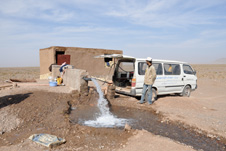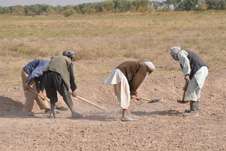Afghanistan
Background:
Ahmad Shah DURRANI unified the Pashtun tribes and founded Afghanistan in 1747. The country won independence from British control in 1919. A brief time of democracy ended in a 1973 coup, which was followed by a 1978 Communist counter-coup.
The Soviet Union invaded in 1979 to support the tottering Afghan Communist regime but withdrew in 1989 under pressure from internationally supported anti-Communist mujahedin rebels. Subsequent civil wars saw Kabul finally fall in 1996 to the Taliban.
Following the 11 September 2001 terrorist attacks in New York City and Washington, D.C., an alliance of the United States, other allies, and the anti-Taliban Northern Alliance (already resisting inside Afghanistan) toppled the Taliban. The United Nations established a process for political reconstruction that included the adoption of a new constitution, a presidential election in 2004, and National Assembly elections in 2005.
In December 2004, Hamid KARZAI became the first democratically elected president. In December 2005 the National Assembly was inaugurated. Karzai was re-elected in November 2009 for a second term. There have been gains toward a stable central government. However, a resurgent Taliban and provincial instability continue to present serious challenges for the Afghan Government.
Geography:
location: north and west of Pakistan, east of Iran
size: 652,230 sq kmland: 652,230 sq km
water: 0 sq km
People:
population: 28,395,716
ethnic groups: Pashtun 42%, Tajik 27%, Hazara 9%, Uzbek 9%, Aimak 4%, Turkmen 3%, Baloch 2%, other 4%
religions: Sunni Muslim 80%, Shia Muslim 19%, other 1%


